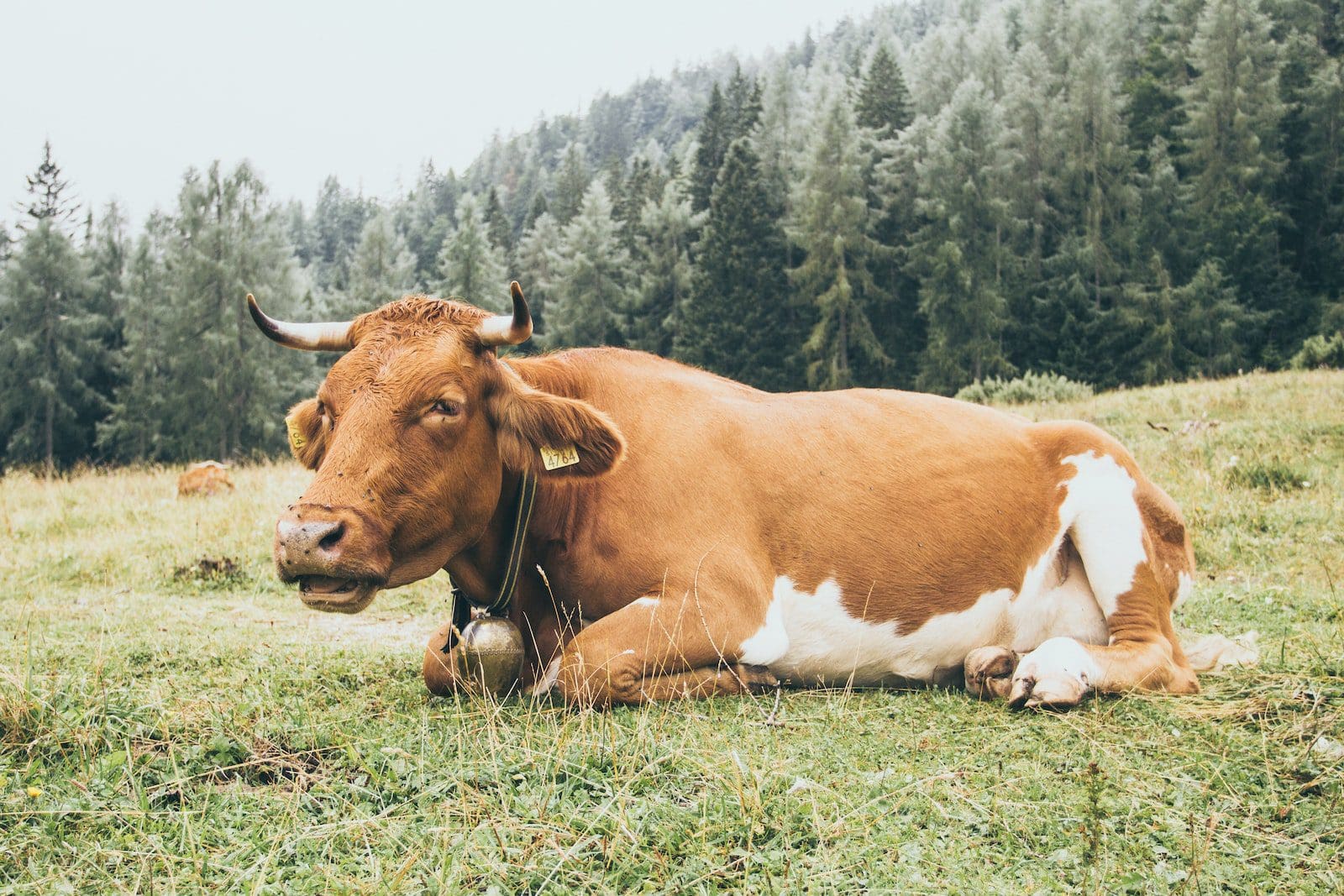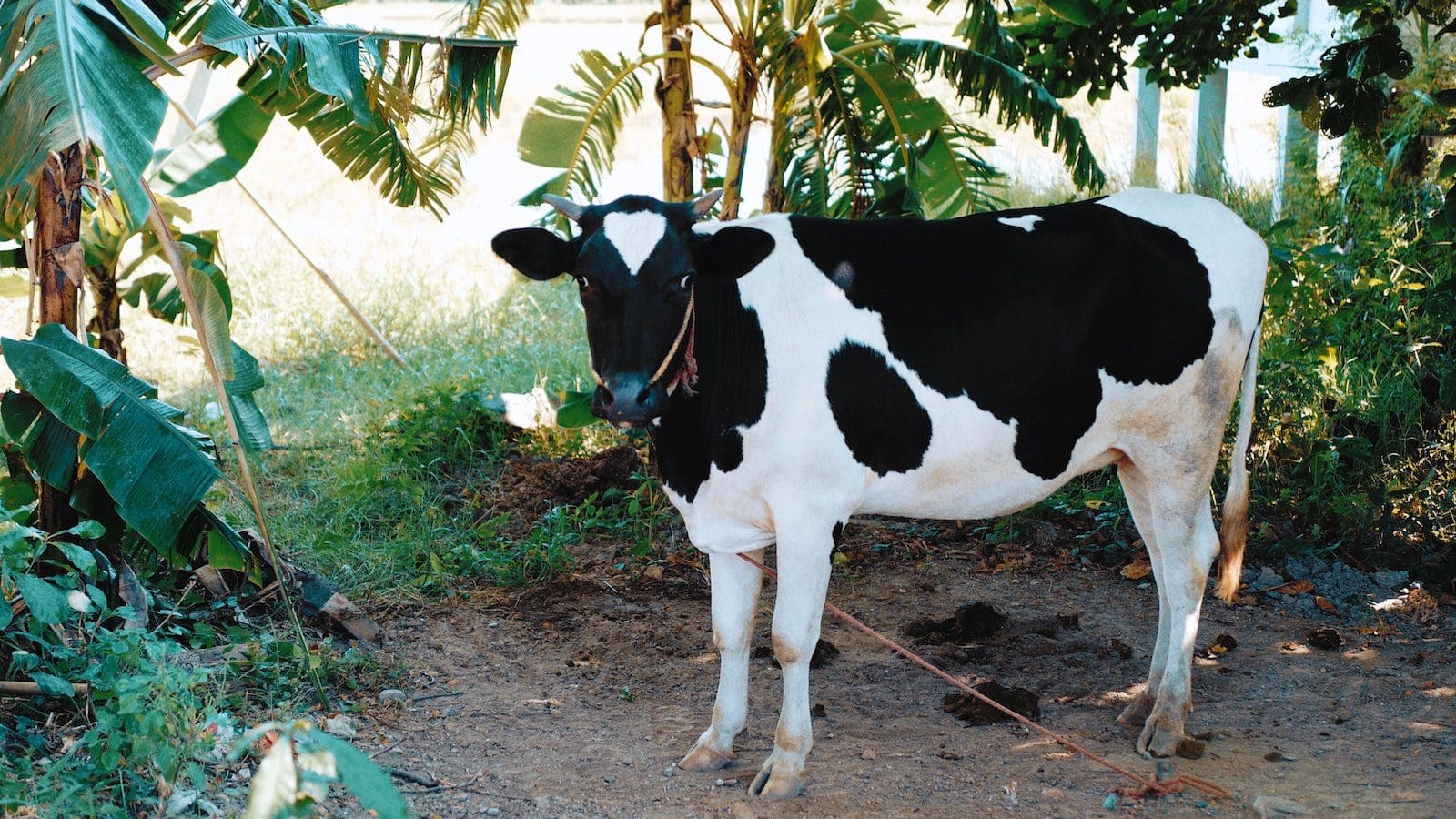Jersey cow and Holstein cow are the two most loved varieties in dairy cultivation. Both are able to change over high amounts of grain into milk.
Key Takeaways
- Jersey cows produce less milk than Holstein cows, but their milk has a higher butterfat content.
- Holstein cows are larger and have distinctive black and white markings, while Jersey cows are smaller and have a light brown or fawn coat.
- Jersey cows adapt better to heat and varied climatic conditions, while Holstein cows perform best in moderate climates.
Jersey Cow vs Holstein Cow
Jersey cows are a breed of dairy cows that originated on the island of Jersey in the English Channel. They are known for their small size and distinctive light brown color, although they can range from tan to dark brown. Holstein cows are a breed of dairy cows that originated in the Netherlands. They are known for their distinctive black-and-white markings, although they can also be red and white or black.

The Jersey cow has found its name from the spot of its initial point of origin. It is named after Jersey Island in the British, where it got originated.
Holstein cow has their origin in the Dutch, provinces of North Holland and Friesland in Northern Germany. Its originating place is known as the highest place generating dairy animals.
Comparison Table
| Parameters of comparison | Jersey Cow | Holstein Cow |
|---|---|---|
| Origin | Jersey cows are originated from the spot Jersey Island in the British Channel. | Holstein cows are originated in the Netherlands. |
| Weight | Jersey cow’s weight is around 350 550 Kg. | Holstein cow’s weight is around 580 Kg. |
| Milk | Jersey produces 13,000 kg of milk in the course of its life. | Holstein cows produce 19,000 Kg of milk in the course of its life. |
| Adaptation | Jersey Cows are more adaptable to hot environments. | Holstein Cows are difficult to adapt to in hot weather. |
| Reproduction | The milk yield in the initial seventy days of lactation for Jersey Cow is 2706 Kg. | The milk yield in the initial seventy days of lactation for the Holstein Cow is 4061 Kg. |
What is Jersey Cow?
The variety of Jersey Cow is notable for its high milk creation, just as the high butterfat content of its milk. The jersey breed is the second biggest type of dairy steer on the planet.
The variety’s notoriety has been supported by variables, for example, its lower cost of creation and, because of lower body weight and, in this way, lower support prerequisites, the capacity to ship a more prominent number of fruitful draining cows per unit region is conceivable, as is unrivalled eating capacity.
Calving ease and a low pace of dystocia have put them on the map for crossbreeding with other dairy and meat breeds to limit calving-related wounds.
Jersey cows have a dark tail and an enormous udder, which is commonplace for a dairy breed. Horns are utilized on the two bulls and cows.

What is Holstein Cow?
Holstein-Friesian, a type of huge dairy cow beginning in northern Holland and Friesland. Its main attributes are its huge size and high contrast spotted markings, strongly characterized as opposed to mixed.
The milk, notwithstanding, has a moderately low butterfat content. The breed is broadly disseminated; however, it normally is amassed in regions having great liquid milk markets.
Experience has instructed that they show unique transformation capacities, which ought to subsequently get consideration according to a specialized perspective when rearing.
Holsteins produce overwhelming calves recognized by quick development, early development and simple consideration. In case they are overseen well, they display no fruitfulness issues.

Main Differences Between Jersey Cow and Holstein Cow
- Jersey cows are more versatile to blistering environments contrasted with Holstein cows.
- The milk yield in the initial seventy days of lactation for Jerseys is 2706 Kg, while for the Holsteins, 4061 Kg.

- https://www.sciencedirect.com/science/article/pii/S0022030209713359
- https://www.sciencedirect.com/science/article/pii/S002203020970671X
Last Updated : 13 August, 2023

Piyush Yadav has spent the past 25 years working as a physicist in the local community. He is a physicist passionate about making science more accessible to our readers. He holds a BSc in Natural Sciences and Post Graduate Diploma in Environmental Science. You can read more about him on his bio page.

The comprehensive information on Holstein’s and Jersey’s adaptability, milk production, and reproduction aspects greatly assists in making informed decisions for cattle farming purposes.
Absolutely, Molly Green. The detailed insights into the breed’s features and characteristics are crucial for directing breed selection and farming practices effectively.
Indeed, Molly. The practical implications of these characteristics for cattle farming decisions are substantial and can’t be overlooked in the decision-making process.
The main differences between Jersey and Holstein cows are clearly presented. The implications of these differences in farming, reproduction, and adaptability are substantial.
I couldn’t agree more. The stark contrasts between the two breeds’ characteristics can greatly influence breeding and management decisions.
Correct, Njohnson. These differences necessitate a deeper understanding of the economics, environmental, and farming implications of choosing between these breeds.
The detailed description of the physical features and the historical background of Jersey and Holstein cows portrays a rich understanding of bovine breeds.
Cooper Alex, I couldn’t agree more. Understanding the context and characteristics of these breeds is essential for anyone involved in animal husbandry.
The detailed comparison table helps to understand the key differences between the Jersey and Holstein cows, making it easier to analyze their implications for dairy cattle farming.
Absolutely, Gavin. The detailed comparison is a crucial guide for individuals involved in the decision-making process for dairy cattle farming.
Well said, Gavin Kelly. The practical takeaways from the comparison enable a logical assessment of the breeds’ suitability for diverse farming conditions.
The research-backed details about the reproduction, milk yields, and origins are critical for individuals or organizations involved in dairy farming to make informed choices.
I couldn’t agree more. The reproductive and milk production differences have substantial implications for the dairy industry as a whole.
The comparison table provides insightful data on the differences in weight, milk production, and adaptation of Jersey and Holstein cows.
Your observation is on point, Bradley76. Holstein’s higher milk production and Jersey’s adaptability to heat creates a valuable comparison.
Valuable insights into the origins, characteristics, and production aspects of the Jersey and Holstein cows provide a comprehensive view of their unique breeding attributes.
The information provided about the origin and characteristics of the Jersey and Holstein cows is fascinating. Understanding the distinctiveness of both breeds will greatly impact farming decisions.
I agree with your comment, Selina87. These differences and the adaptability to different environmental conditions are essential in determining the breed selection for dairy farming.
The article’s focus on calving ease and low rate of dystocia associated with Jersey cows and the growth and fertility aspects of Holstein cows is essential for those involved in cattle farming.
Absolutely, Mchapman. These insights are essential for evaluating breeding strategies and selecting appropriate breeds for sustainable and profitable cattle farming.
The distinction in calving ease and distinct adaptation to varied climatic conditions between these two breeds highlights their unique breeding characteristics.
Well said, Joanne Watson. The practical aspects of calving ease and environmental adaptability are significant considerations for cattle farmers.